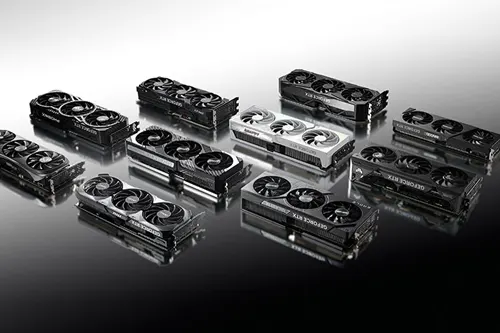Nvidia GeForce RTX 3080
Nvidia GeForce RTX 3080 Founders Edition: Hail to the King!
Nvidia’s GeForce RTX 3080 Founders Edition is here, claiming the top spot on our GPU benchmarks hierarchy, and ranking as the best graphics card currently available — provided you’re after performance first, with price and power being lesser concerns. After months of waiting, we finally have independent benchmarks and testing data. Nvidia has thrown down the gauntlet, clearly challenging AMD’s Big Navi to try and match or beat what the Ampere architecture brings to the table.
We have a separate article going deep into the Ampere architecture that powers the Nvidia GeForce RTX 3080 and other related GPUs. If you want the full rundown of everything that’s changed compared to the Turing architecture, we recommend starting there. But here’s the highlight reel of the most important changes:
The GA102 is the first GPU from Nvidia to drop into the single digits on lithography, using Samsung’s 8N process. The general consensus is that TSMC’s N7 node is ‘better’ overall, but it also costs more and is currently in very high demand — including from Nvidia’s own A100. Could the consumer Ampere GPUs have been even better with 7nm? Perhaps. But they might have cost more, only been available in limited quantities, or maybe they would have been delayed a few more months. Regardless, GA102 is still a big and powerful chip, boasting 28.3 billion transistors packed into a 628.4mm square die. If you’re wondering, that’s 52% more transistors than the TU102 chip used in RTX 2080 Ti, but in a 17% smaller area.
Ampere ends up as a split architecture, with the GA100 taking on data center ambitions while the GA102 and other consumer chips have significant differences. The GA100 focuses far more on FP64 performance for scientific workloads, as well as doubling down on deep learning hardware. Meanwhile, the GA102 drops most of the FP64 functionality and instead includes ray tracing hardware, plus some other architectural enhancements. Let’s take a closer look at the Ampere SM found in the GA102 and GA104.
Nvidia has radically altered the design of its Founders Edition cards for the RTX 30-series. The new design still includes two axial fans, but Nvidia heavily redesigned the PCB and shortened it so that the ‘back’ of the card (away from the video ports) consists of just a fan, heatpipes, radiator fins, and the usual graphics card shroud. Nvidia says the new design delivers substantial improvements in cooling efficiency, while at the same time lowering noise levels. We’ll see the fruits of the design later.
Aesthetics are highly subjective, and we’ve heard plenty of people like the new design, while others think it looks boring. There’s no RGB bling if that’s your thing, and the only lighting consists of a white GeForce RTX logo on the top of the card with subtle lighting around the ‘X’ on both sides of the card (but only half of the ‘X’ is lit up on the side with the “RTX 3080” logo).
Personally, I think the new card looks quite nice, and it feels very solid in the hand. It’s actually about 100g heavier than the previous RTX 2080 design, and as far as I’m aware, it’s the heaviest single-GPU card Nvidia has ever created. It’s also about 2cm longer than the previous generation cards and uses the typical two-slot width. (The GeForce RTX 3090 is about ready to make the 3080 FE look puny, though, with its massive three-slot cooler.)
Nvidia provided the above images of the teardown of the RTX 3080 Founders Edition. We’re not ready to attempt disassembly of our card yet — and frankly, we’re out of time — but we may return to the subject soon. We’re told getting the card apart is a bit trickier this round, mostly because Nvidia has hidden the screws behind tiny covers.
Advertisement
The main board looks far more densely populated than previous GPUs, with the 10 GDDR6X memory chips surrounding the GPU in the center. You can also see the angled 12-pin power connector and the funky-looking cutout at the end of the PCB. Power delivery is obviously important with a 320W TGP, and you can see all the solid electrolytic capacitors placed to the left and right of the memory chips.
The memory arrangement is also interesting, with four chips on the left and right sides of the GPU, up to three chips above the GPU (two mounting positions are empty for the RTX 3080), and a final single chip below the GPU. Again, Nvidia clearly spent a lot of effort to reduce the size of the board and other components to accommodate the new and improved cooling design. Spoiler: It works very well.
One interesting thing is that the ‘front’ fan (near the video ports) spins in the usual direction — counterclockwise. The ‘back’ fan, which will typically face upward when you install the card in an ATX case, spins clockwise. If you look at the fins, that means the back fan spins the opposite direction from what we normally expect. The reason is that Nvidia found this arrangement pulls air through the radiator better and generates less noise. Also note that the back fan is slightly thicker, and the integrated ring helps increase static pressure on both fans while keeping RPMs low.









